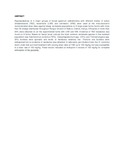| dc.contributor.author | Waruiru, RM | |
| dc.contributor.author | Ngotho, JW | |
| dc.contributor.author | Gichanga, EJ | |
| dc.date.accessioned | 2014-04-30T09:37:42Z | |
| dc.date.available | 2014-04-30T09:37:42Z | |
| dc.date.issued | 1994 | |
| dc.identifier.citation | Bulletin of Animal Health and Production in Africa 1994 Vol. 42 No. 3 pp. 211-215 | en_US |
| dc.identifier.uri | http://www.cabdirect.org/abstracts/19950803860.html?resultNumber=8&q=au%3A%22Ngotho%2C+J.+W.%22 | |
| dc.identifier.uri | http://hdl.handle.net/11295/66210 | |
| dc.description.abstract | Representatives of 3 major groups of broad spectrum anthelmintics with different modes of action (thiabendazole (TBZ), levamisole (LVM) and ivermectin (IVM)) were used at the manufacturer's recommended dose rates against sheep nematode populations on 9 large-scale farms (farms with more than 50 sheep) distributed throughout Rongai Division of Nakuru District, Kenya. Efficacies of more than 90% were obtained on all the experimental farms with LVM and IVM. Evidence of TBZ resistance was found on 6 farms. Based on faecal larval cultures the most common nematode species in the resistant population was Haemonchus contortus (78%). Oesophagostomum spp. (14%) and Trichostrongylus spp. (8%) burdens were sporadic and levels of resistance relatively low. Trichuris ovis burdens were widespread but no evidence of resistance was detected. In laboratory pen titration trials, the H. contortus strain under test survived treatment with varying dose rates of TBZ up to 100 mg/kg, but was susceptible to a dose rate of 150 mg/kg. These results indicated an end-point in excess of 150 mg/kg for complete elimination of the parasites. | en_US |
| dc.language.iso | en | en_US |
| dc.publisher | University of Nairobi, | en_US |
| dc.title | Thiabendazole resistance in a field population of H. contortus from sheep in Rongai Division, Nakuru, Kenya | en_US |
| dc.type | Article | en_US |

